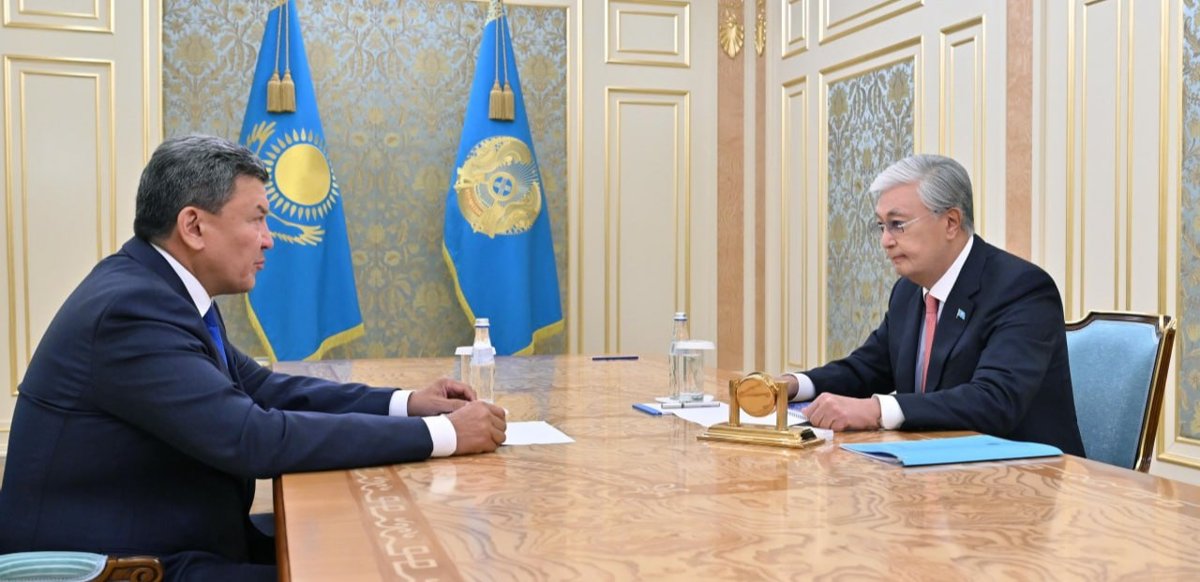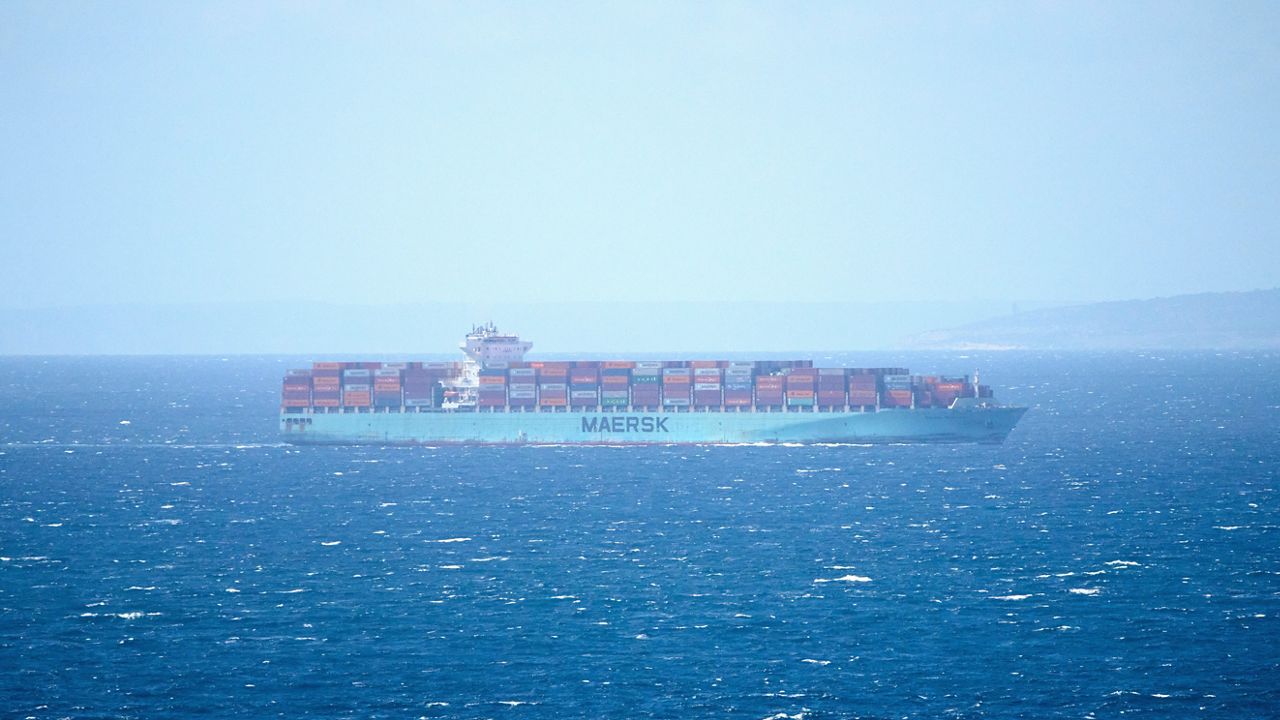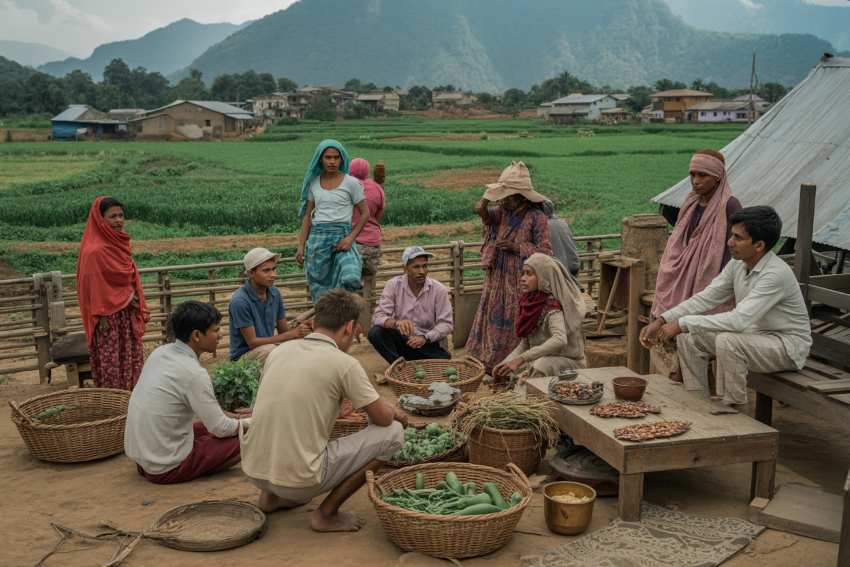Gauez Nurmukhambetov reports to President on North Kazakhstan region’s socio-economic development in H1 2025 – qazinform.com

Socio-Economic Development Report: North Kazakhstan Region (H1 2025)
Advancements in Sustainable Agriculture and Food Security (SDG 2, SDG 6, SDG 12)
A presidential briefing on the socio-economic development of the North Kazakhstan region for the first half of 2025 highlighted significant progress in aligning agricultural practices with the Sustainable Development Goals.
- Sustainable Agriculture (SDG 2): The area dedicated to oilseed and forage crops has been expanded, enhancing food security and supporting the livestock sector. The region leads the nation in the establishment of industrial dairy complexes and is ranked among the top three for milk production.
- Responsible Water Management (SDG 6): The active introduction of water-saving technologies is underway to ensure sustainable management of water resources in agriculture.
- Financial Support for Zero Hunger (SDG 2): Under the Ken Dala 2 program, regional agrarians received 97 billion tenge in financial support, a 24% increase from the same period in 2024, directly contributing to the resilience of the agricultural sector.
Fostering Economic Growth and Decent Work (SDG 8, SDG 9)
The region is implementing a robust investment strategy to stimulate economic growth and create employment opportunities, in line with SDG 8 and SDG 9.
- Investment and Job Creation: There are 52 active investment projects valued at 893 billion tenge. These initiatives are projected to create 7,500 jobs, promoting full and productive employment for all.
- Industrial Innovation: The development of industrial dairy complexes represents a key investment in resilient infrastructure and sustainable industrialization.
Enhancing Social Infrastructure and Reducing Inequalities (SDG 3, SDG 4, SDG 10, SDG 11)
Significant investments in social infrastructure aim to build sustainable communities and ensure access to essential services, addressing multiple SDGs.
- Sustainable Cities and Communities (SDG 11): The region plans to commission 332,000 square meters of housing in 2025. Five multi-story residential buildings have been completed, with 11 more scheduled for completion by year-end.
- Reducing Inequalities (SDG 10): To support vulnerable populations, 258 apartments will be acquired in 2025, ensuring access to adequate and affordable housing.
- Quality Education (SDG 4): A new 600-seat school was constructed in Petropavlovsk under the Keleshek Mektepteri national project. A 280-seat kindergarten is currently under construction to expand access to early childhood education.
- Good Health and Well-being (SDG 3): Access to healthcare in rural areas has been improved through the modernization of 46 healthcare facilities.
Presidential Directives for Sustainable Progress (SDG 2, SDG 7, SDG 9)
The President issued directives to ensure continued progress towards sustainable development targets.
- Ensure high-quality preparation for the upcoming harvesting campaign to maintain food security (SDG 2).
- Guarantee the timely implementation of all agro-industrial investment projects (SDG 9).
- Complete critical repair and reconstruction works at the Petropavlovsk Thermal Power Plant-2 and associated heat and power supply networks to ensure reliable and sustainable energy and infrastructure (SDG 7, SDG 9).
National Infrastructure Development Update
Progress in Sustainable Transport Infrastructure (SDG 9)
- The Head of State received a report from the Chairman of the Board of Kazakhstan Temir Zholy NC JSC, Talgat Aldybergenov, detailing the company’s operational results for the first half of 2025, reflecting ongoing efforts to develop resilient and sustainable national railway infrastructure.
Analysis of Sustainable Development Goals in the Article
1. Which SDGs are addressed or connected to the issues highlighted in the article?
- SDG 2: Zero Hunger – The article discusses agricultural development, including expanding crop areas, financial support for agrarians, and increased milk production.
- SDG 3: Good Health and Well-being – The modernization of rural healthcare facilities is mentioned.
- SDG 4: Quality Education – The construction of a new school and a kindergarten is highlighted.
- SDG 6: Clean Water and Sanitation – The introduction of water-saving technologies in agriculture is noted.
- SDG 8: Decent Work and Economic Growth – The article points to significant investment projects creating thousands of jobs.
- SDG 9: Industry, Innovation, and Infrastructure – The text covers the launch of industrial complexes and major infrastructure projects like power plant repairs, network reconstruction, and new railway lines.
- SDG 11: Sustainable Cities and Communities – The article details the construction of new housing, with a specific focus on providing apartments for vulnerable populations.
2. What specific targets under those SDGs can be identified based on the article’s content?
- SDG 2: Zero Hunger
- Target 2.3: By 2030, double the agricultural productivity and incomes of small-scale food producers. The article supports this by mentioning the “97 billion tenge of financial support” for agrarians, which is a 24% increase, aimed at boosting their activities.
- Target 2.4: By 2030, ensure sustainable food production systems and implement resilient agricultural practices. This is addressed through the expansion of “oilseed and forage crops” and the introduction of “water-saving technologies.”
- SDG 3: Good Health and Well-being
- Target 3.8: Achieve universal health coverage. The modernization of “46 rural healthcare facilities” is a direct step towards improving access to and quality of health services in rural areas.
- SDG 4: Quality Education
- Target 4.1: By 2030, ensure that all girls and boys complete free, equitable and quality primary and secondary education. The construction of a “600-seat school” contributes directly to this target by expanding educational infrastructure.
- Target 4.2: By 2030, ensure that all girls and boys have access to quality early childhood development, care and pre-primary education. This is supported by the construction of a “280-seat kindergarten.”
- SDG 6: Clean Water and Sanitation
- Target 6.4: By 2030, substantially increase water-use efficiency across all sectors. The active introduction of “water-saving technologies” in the agricultural sector directly aligns with this target.
- SDG 8: Decent Work and Economic Growth
- Target 8.5: By 2030, achieve full and productive employment and decent work for all. The “52 investment projects” that enable the employment of “7,500 people” are a clear contribution to this target.
- SDG 9: Industry, Innovation, and Infrastructure
- Target 9.1: Develop quality, reliable, sustainable and resilient infrastructure. This is evidenced by the “completion of repair works at the Petropavlovsk Thermal Power Plant-2,” the “reconstruction of heat and power supply networks,” and the construction of “over 1700 km of new railway lines.”
- SDG 11: Sustainable Cities and Communities
- Target 11.1: By 2030, ensure access for all to adequate, safe and affordable housing. The plan to “commission 332,000 square meters of housing” and acquire “258 apartment… for the vulnerable groups” directly addresses this target.
3. Are there any indicators mentioned or implied in the article that can be used to measure progress towards the identified targets?
- For SDG 2:
- Indicator: Volume of financial support provided to agrarians (97 billion tenge, a 24% increase).
- Indicator: National ranking in milk production (among the top three).
- Indicator: Number of new industrial dairy complexes launched.
- For SDG 3:
- Indicator: Number of healthcare facilities modernized (46 rural facilities).
- For SDG 4:
- Indicator: Number of new schools built and their capacity (one 600-seat school).
- Indicator: Number of new kindergartens built and their capacity (one 280-seat kindergarten).
- For SDG 8:
- Indicator: Number of jobs created through new projects (7,500 people).
- Indicator: Total value of investment projects (893 billion tenge).
- Indicator: Number of investment projects implemented (52).
- For SDG 9:
- Indicator: Length of new railway lines constructed (over 1700 km).
- Indicator: Number of power plants undergoing repair (Petropavlovsk TPP-2).
- For SDG 11:
- Indicator: Total area of new housing commissioned (332,000 square meters).
- Indicator: Number of housing units provided to vulnerable groups (258 apartments).
4. Table of SDGs, Targets, and Indicators
| SDGs | Targets | Indicators |
|---|---|---|
| SDG 2: Zero Hunger | 2.3: Double agricultural productivity and incomes. 2.4: Ensure sustainable food production systems. |
97 billion tenge in financial support (24% increase); Top three ranking in milk production. |
| SDG 3: Good Health and Well-being | 3.8: Achieve universal health coverage. | 46 rural healthcare facilities modernized. |
| SDG 4: Quality Education | 4.1: Ensure quality primary and secondary education. 4.2: Ensure access to quality early childhood development. |
One 600-seat school built; One 280-seat kindergarten under construction. |
| SDG 6: Clean Water and Sanitation | 6.4: Substantially increase water-use efficiency. | Active introduction of water-saving technologies. |
| SDG 8: Decent Work and Economic Growth | 8.5: Achieve full and productive employment. | 7,500 jobs created from 52 investment projects worth 893 billion tenge. |
| SDG 9: Industry, Innovation, and Infrastructure | 9.1: Develop quality, reliable, sustainable and resilient infrastructure. | Repair of Petropavlovsk TPP-2; Reconstruction of heat/power networks; Over 1700 km of new railway lines built. |
| SDG 11: Sustainable Cities and Communities | 11.1: Ensure access for all to adequate, safe and affordable housing. | 332,000 square meters of housing to be commissioned; 258 apartments for vulnerable groups. |
Source: qazinform.com
What is Your Reaction?
 Like
0
Like
0
 Dislike
0
Dislike
0
 Love
0
Love
0
 Funny
0
Funny
0
 Angry
0
Angry
0
 Sad
0
Sad
0
 Wow
0
Wow
0













































































